The Best Back Workout Routine for Mass & Hypertrophy
Back workouts for mass are more important than many weightlifters realize.
A thick, wide back is crucial for an impressive physique. But more than that, it’s the foundation for your overall performance.
It helps you do pretty much any athletic movement, including squatting, pulling, and pressing more effectively and safely.
In this article, you’ll find a detailed guide to the back’s anatomy, the best exercises for each muscle group in your back, a routine designed to help you develop a big, muscular back that allows you to perform at your best, and more.
- Back Anatomy
- How to Gain Mass and Strength in Your Entire Back
- The Best Back Workout for Mass and Strength
- 1. Deadlift
- 2. Pull-up
- 3. One-Arm Dumbbell Row
- 4. Cable Pullover
- How to Organize Your Back Workout Schedule
- 3 Tips to Get More Out of Your Back Workout Program for Mass
- 1. End every set 1-to-3 reps shy of muscle failure.
- 2. Once you hit the top of your rep range for a set, move up in weight.
- 3. Take the right supplements.
Table of Contents
Back Anatomy
The muscles that make up the bulk of the back are:
- Trapezius (traps)
- Rhomboids
- Latissimus dorsi (lats)
- Erector spinae
- Teres major and minor
- Posterior deltoids (rear delts)
- Infraspinatus
Here’s how they look:
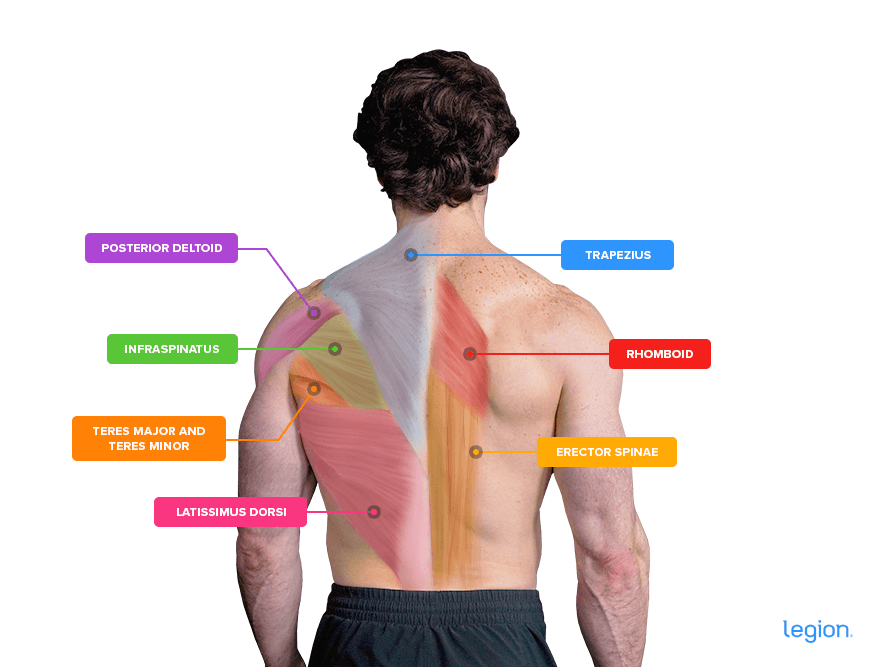
How to Gain Mass and Strength in Your Entire Back
To build a strong, well-rounded back that looks impressive and supports peak performance, you need to:
- Train every muscle on the back of your torso.
- Focus on compound exercises (exercises that train multiple muscle groups simultaneously).
To achieve the first, divide your back muscles into three areas: upper, mid, and lower back. Making this distinction ensures you pick exercises that target each section of your back and prevents you from overemphasizing one area.
Here are the muscles in each group:
- Upper Back: Upper traps, rhomboids, teres major and minor, rear delts, and infraspinatus
- Mid Back: Mid and lower traps and lats
- Lower Back: Erector spinae
Focusing on compound exercises is paramount because they allow you to train multiple muscles simultaneously, lift heavy weights safely, and progress regularly, which typically stimulates more overall muscle growth than focusing on isolation exercises (which train one muscle at a time).
The best compound upper back exercises typically involve pulling a weight toward your torso from in front of you, including the barbell, dumbbell, and cable row.
Effective mid back exercises usually involve pulling a weight from above your head toward your torso, such as the pull-up, chin-up, and lat pulldown.
To train your lower back, exercises that involve pulling a weight from the floor (or near to the floor) until you’re standing upright are usually best. Some top-tier examples include the conventional, sumo, and trap-bar deadlift.
The Best Back Workout for Mass and Strength
The following back workout program for mass includes exercises that train your back from top to bottom, so you develop all-around size and strength.
It also contains the perfect amount of volume (sets) to spur growth without wearing your to a frazzle.
If I could only recommend one workout for a massive back, this would be it:
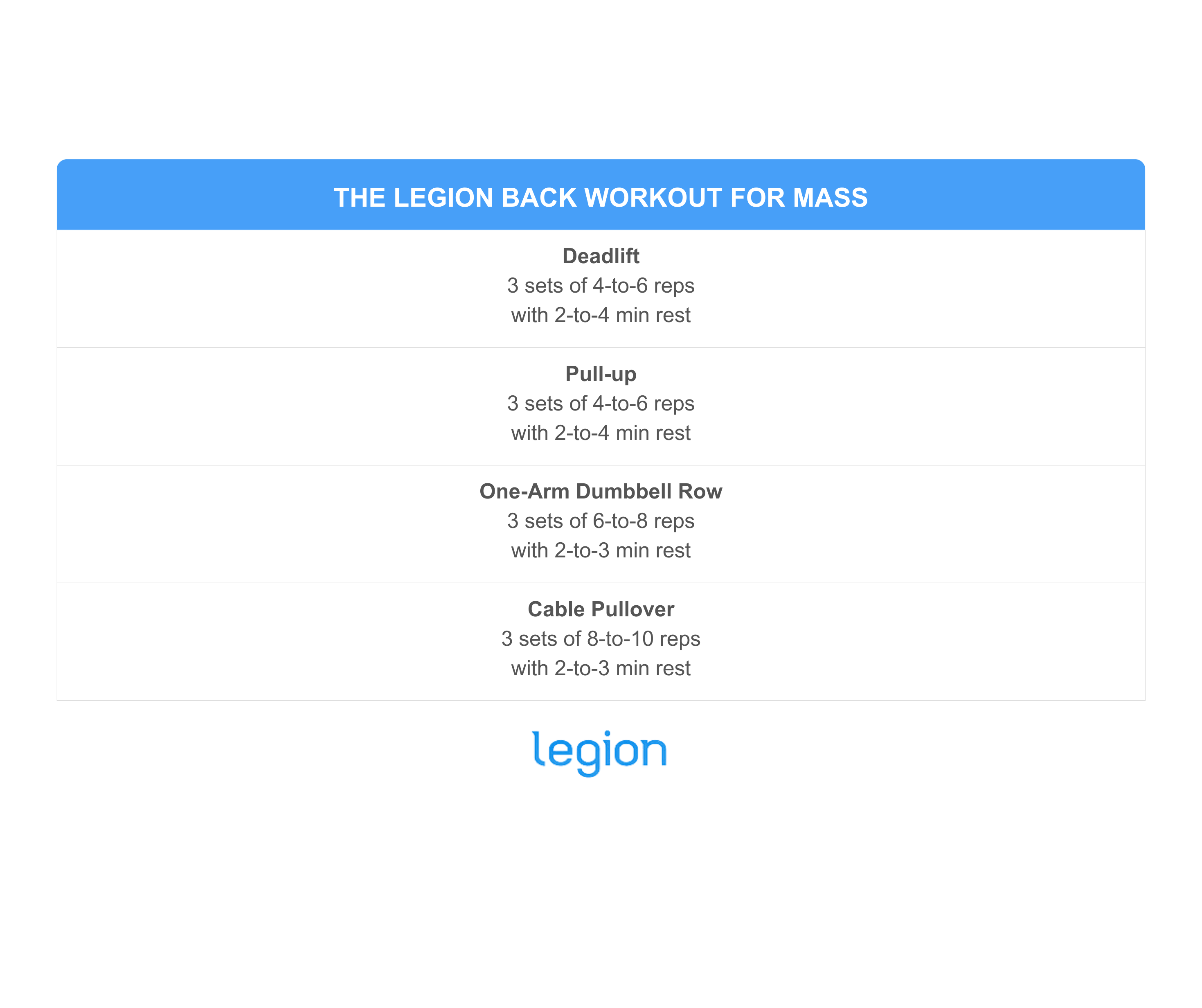
Now let’s look at how to perform the exercises and what makes each so effective:
1. Deadlift
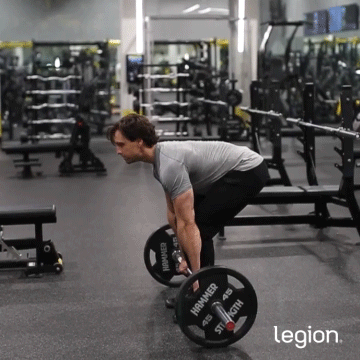
The main advantages of the deadlift are that it allows you to lift maximally heavy weights and progressively overload your entire back, especially your lower back. It also improves athletic performance and mimics everyday movements, strengthening the muscles involved and making daily tasks easier.
How to:
- Position your feet so they’re a bit less than shoulder-width apart with your toes pointed slightly out. Move a loaded barbell over your midfoot so it’s about an inch from your shins.
- Move down toward the bar by pushing your hips back and grip the bar just outside your shins.
- Take a deep breath of air into your belly, flatten your back by pushing your hips up slightly, and then drive your body upward and slightly back by pushing through your heels until you’re standing up straight.
- Reverse the movement and return to the starting position.
Expert Tip: Pressing your upper arms into your sides as if you were trying to crush oranges in your armpits ensures your shoulders are in the correct starting position and prevents your upper back from rounding, which helps you lift heavier weights more safely.
2. Pull-up
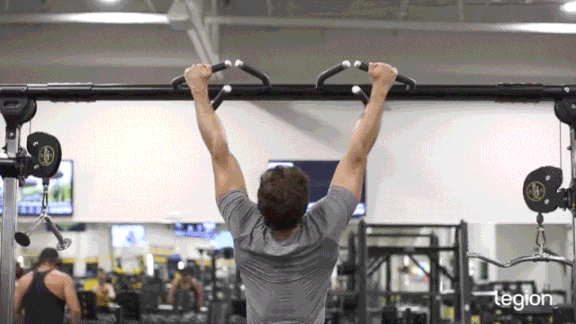
While the pull-up trains most back muscles, it’s particularly effective for training your lats, which is important for developing the aesthetic “V-taper” many people want. It also trains your biceps, abs, and even your chest muscles to a lesser extent.
How to:
- Grab a pull-up bar slightly wider than shoulder-width apart with your palms facing away from you.
- Lift your feet so that you’re hanging with your arms straight.
- Pull your body up until your chin is above the bar.
- Once your chin has passed the bar, reverse the movement and return to the starting position.
Expert Tip: Pulling yourself up with enough force to “smash” your chest into the bar helps you attack each rep with the intensity you need to get your chin over the bar.
3. One-Arm Dumbbell Row
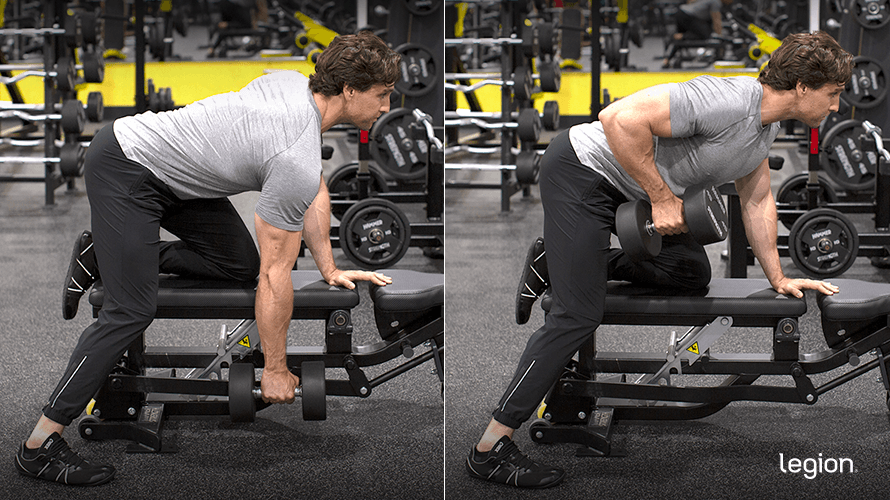
The one-arm dumbbell row trains each side of your back independently, helping you find and fix muscle imbalances. It can also help you establish a stronger “mind-muscle connection” and may enhance athletic performance more than back exercises that train both sides of your body simultaneously.
How to:
- Hold a dumbbell in your right hand.
- Plant your left knee and hand firmly on a bench, your right foot on the floor a foot or two from the bench, and let your right arm hang straight down toward the floor.
- Keeping your back straight, pull the dumbbell upward until it touches your torso, and then return the dumbbell to the starting position.
- Once you’ve completed the desired number of reps, repeat the process with your left arm.
Expert Tip: The one-arm dumbbell row has an unusual resistance curve—each rep feels easiest when you’re strongest (at the bottom) and hardest when you’re weakest (at the top). This makes it hard to “finish” reps, even when the rest of the rep feels easy, forcing you to end a set before your back is fully stimulated.
Overcome this by using a little momentum to make the top portion of each rep easier. Doing so allows you to use a full range of motion and do more total reps before ending your sets (which will lead to more muscle and strength gain over time).
4. Cable Pullover
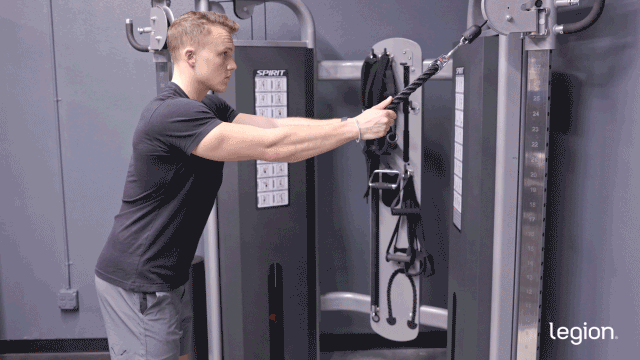
The cable pullover trains your lats in a fully stretched position and through a long range of motion, which makes it highly effective for gaining lat size.
How to:
- Set the pulley to the highest position on a cable machine and attach the rope handle.
- Hold one end of the rope in each hand, and step away from the pulley until you feel tension in the cable.
- Lean forward until your body makes a 45-degree angle with the floor and your arms are nearly straight overhead.
- Set your feet shoulder-width apart and bend your knees a little.
- Keep a small bend in your elbows and pull the rope in an arc toward your feet until your hands are by your thighs or a little past them.
- Reverse the movement and return to the starting position.
How to Organize Your Back Workout Schedule
If you’re new to weightlifting, doing the back workout above once per week is ideal for gaining size and strength.
If you’ve been training for over a year, training your back twice a week can yield better results.
In this scenario, make the workout above your main back day, and then include some extra back volume (sets) in another workout later in the week.
For example, do the back day workout above on Tuesday, then add 3-to-5 sets of pull-ups or rows to the beginning of an upper-body, pull, or arm day on Thursday or Friday.
3 Tips to Get More Out of Your Back Workout Program for Mass
1. End every set 1-to-3 reps shy of muscle failure.
As I explain in my fitness books for men and women, to maximize your size gains, you must take most of the sets in your back day workouts to within a rep or two of failure.
Ask yourself at the end of each set, “If I had to, how many more reps could I have gotten with good form?” If the answer is more than two, increase the weight or reps to make your next set more challenging.
2. Once you hit the top of your rep range for a set, move up in weight.
If your back day workout calls for 4-to-6 reps of the deadlift and you get 6 reps for a set, add 10 pounds to your next set.
If you manage 3 or fewer reps with the new weight, reduce the weight by 5 pounds to ensure you stay in the 4-to-6 rep range.
Follow this pattern of trying to add reps or weight to every exercise in every workout, and you’ll have no issues adding mass to your back.
3. Take the right supplements.
These supplements can help you optimize your performance and gains while following your mass-building back workout program:
- Protein powder: Protein powder, such as whey or casein, provides your body with the nutrients needed to build muscle tissue and recover from workouts.
- Creatine: Creatine boosts muscle and strength gain, improves anaerobic endurance, and reduces muscle damage and soreness from your workouts.
- Pre-workout: A high-quality pre-workout enhances energy, mood, and focus, increases strength and endurance, and reduces fatigue.
(If you’d like even more specific advice about which supplements you should take to reach your health and fitness goals, take the Legion Supplement Finder Quiz, and in less than a minute, you’ll know exactly what supplements are right for you.)
The post The Best Back Workout Routine for Mass & Hypertrophy appeared first on Legion Athletics.
https://ift.tt/bjqhkEZ June 28, 2024 at 06:00PM Legion Athletics

Comments
Post a Comment